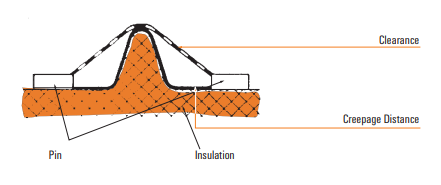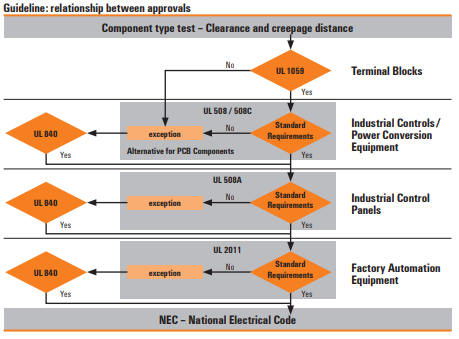To protect persons or systems from the effects of electrical operating voltages, especially in the case of malfunction of equipment, sufficient measurement of the clearance and creepage distance is required.
For safety reasons and for every certification (IEC, UL, CSA) it is essential that certain clearance and creepage distances are maintained. In the following, you find further explanations and information on determining clearance and creepage distances.
Clearance distance - shortest separation in the air between two conducting parts
- Determination in accordance with IEC: Identification of the overvoltage category

- Definition of the pollution severity
- Determination of the rated surge voltage according to table 1 in the brochure below
- Determination of the minimum creepage distance according to table 2 in the brochure below
Creepage distance - shortest separation along the surface of insulating material between two conducting parts
Determination in accordance with IEC:
- Identification of the overvoltage category
- Definition of the pollution severity
- Determination of the rated surge voltage dependent on the mains according to table 3 in the brochure below
- Determination of the minimum creepage distance dependent on the pollution severity according to table 4 in the brochure below

The rated impulse voltage, critical for the dimensioning of the clearance distance, results from the overvoltage category and the conductor - earth voltage derived from the nominal mains voltage (taking all mains types into consideration).
The minimum clearance distance (up to installation heights of 2000 m above sea level) is determined from the rated surge voltage and the pollution severity.
A detailed overview of the calculation of the clearance and creepage distance is available as a download.

